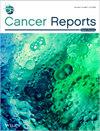Recurrent Malignant Melanoma on the Tongue: A Case Report and Review of the Literature
Abstract
Background
Melanoma of the oral mucosa is an uncommon cancer arising from the tissues lining the mouth. Among oronasal malignant melanomas, tongue melanoma makes up a mere 2%. Optimal treatments for this rare and often late-stage disease remain elusive. However, surgery with free margins is considered the primary treatment and is often combined with other therapies such as neck dissection, adjuvant radiotherapy, chemotherapy, and immunotherapy.
Case
This case involves a 33-year-old woman with a history of malignant melanoma on her tongue. She had previously undergone a partial glossectomy and was on maintenance imatinib treatment for ~2 years. During her follow-up, a new lesion was discovered on her tongue, which was confirmed to be malignant melanoma and was resected. The tumor exhibited a depth of invasion of 8 mm. All surgical margins were clear, with the closest margin being 3 mm. The lesion was reconstructed with a submental flap. Adjuvant radiotherapy was also given. The patient has been on maintenance follow-up for 3 years with no signs of recurrence.
Conclusion
Malignant melanoma should be considered in the differential diagnosis of pigmented and non-pigmented lesions of the tongue and oral mucosa. A thorough clinical evaluation, followed by histopathological and immunohistochemical examination of any suspicious lesions, is essential for early diagnosis. Early detection and prompt treatment are crucial for optimizing patient outcomes and improving survival rates.


 求助内容:
求助内容: 应助结果提醒方式:
应助结果提醒方式:


